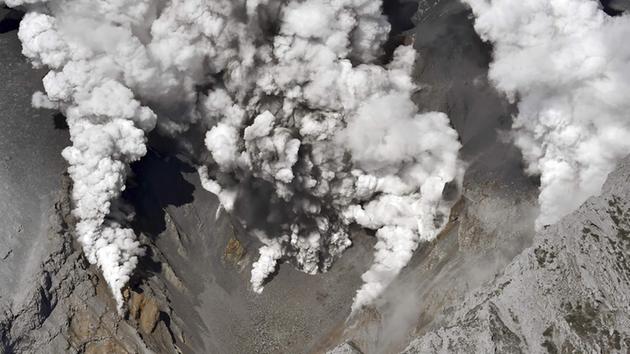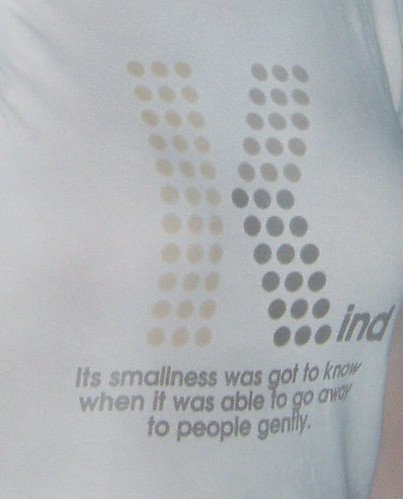I've mentioned already that there's a lot of shopping to be done in Kyoto for foreigners, and, strictly speaking, it's not limited to deodorant. Right now I'd like to take you on a little tour of the Nishiki Market.
You're not as interested in the fascinating history of the market as I am, and please never underestimate my ability and tendency to bore anyone to death on just about any subject as long as they keep anything like a receptive look on their face or are not saying, "pardon me while I go get into my pajamas." So I'll skip over the fascinating history of the market and get right to the, uh, market.
The first matter of interest concerning the nishiki market is its fascinating history. It's been going on in more or less the same place for six or seven hundred years. It started as a fish market and gradually became a combination fish market and market for all kinds of other things. It runs parallel to Shijo Dori, the main street that was a click north of where I was staying, so the west end of the market was about two blocks from me.
 |
| Japanese lanterns -- how clever |
The market is essentially both sides of the street, except that because the storefronts encroach into what doubtless was once the street, the "street" now is just a space between the storefront, the width of three or four people, maybe. Or, I guess, nineteen or twenty Japanese people.
It's roofed, which is useful in the rainy season and probably winter, too, and it's several blocks long, so there's a break at the end of the block for cars to mow you down when you cross the street. Incidentally, those spots where the streets cross the market are the only places in all of Japan I ever saw where traffic doesn't yield to pedestrians, but rather the other way around. I think there must some unwritten understanding, or, I guess, maybe it's just written in Japanese. That would make some sense, I suppose.
 |
| Just the thing to quiet that crying child |
Probably about half of the stalls are fish stalls. I use the word "fish" in the Japanese rather than the American sense. Fish, shellfish, fish heads, salted fish, raw fish, tempura (fried) fish. I think rather my favorite was what I called the octopop. I don't know how many words this picture is worth, so instead of doing the math I'll just post the pic.
It may be hard to tell from the pic, but, yeah, the head is just about the size of a tootsie pop, except that I don't think it has a surprise chocolate filling, though, not having tried it I coudn't say for sure. I really did try to imagine, though, what
is in that squiggly little head. I admit to being as curious as some and, as concerns Japan at least, perhaps more adventurous than most. And I do love octopus, it's my favorite sushi. Still, I walked right on by the octopops. In answer to the question from the ninth row, yes, people do eat them right on the stick. Or so I was told. Maybe someone was pulling my leg.
 |
| With or, optional, without brains and eyeballs. |
Get it?
For those who like their octopus in a more, I don't know, traditional form, there was just good old octopus tentacle.
In addition to the fish stalls, there were stalls that sold, I think, at least one of everything available anywhere in Kyoto. Except minutes, I guess, on computers A and B. There were shoe/sock/slipper stalls, kimono and yukata, stalls that sold fresh eggs and Japanese omelets (with the seaweed cooked in, actually pretty good), fruits, vegetables, green tea ice cream, desserts, porcelain dishes, and one of my favorites, cutlery.
No, not ginzu knives. This is Japanese knifery in a store started by a bloke who also made swords for samurai warriors, in the 15th century, I think.
 |
| My Yanagiba |
One of the interesting aspects of Japanese cutlery stores is that all of it is divided into two sides -- one for left handed people and one for everyone else. In fact, when I expressed an interest in looking at
yanagiba the first thing they wanted to know was whether I was left- or right-handed.
The reason for this is that these knives are sharpened only on one side. The other side is straight. What this means is that rather than having two 15-degree edges, for a total of 30 degrees, like a German knife, the Japanese counterpart has one edge, say 12 degrees, for a total of, you know, 12 degrees. So compared to the Japanese blade the German blade has the slicing power of, say, a ball-peen hammer.
Needless to say that's not for every job, and it requires lots of sharpening (the obliging fellow said sharpening was a snap and then proceeded to give me a rudimentary 45-minute lesson in sharpening the thing which includes such obvious necessities as how to place your feet, what angle to stand at and how far to stand from the counter. At the end I promised to practice, practice, practice.). Still, it renders a sharp blade that doesn't have a lot of trouble cutting raw fish.
 |
| It's the two symbols at the top, sa & mu (top to bottom) |
I'd been looking for a Yanagiba for a while, so I bought this one (the right-handed version of course). They insisted on putting my name into the blade, so rather than having them deal with my rather difficult last name I just asked them to make it "Samu," close enough. Which they did. This is "samu" in katakana, the kana "alphabet" used for difficult German names.
I went to the Nishiki Market almost every day, though I rarely bought anything, just a yukata and the knife (with sharpening stone, which works either left- or right-). If you ever go to Kyoto, yes, by all means see the pagodas and the temples and the shrines. See all the sights, but I urge you not to miss the Nishiki Market. The sights, and the sounds, and the smells, all not to be missed.
 I have to say I found this a bit surprising in view of the fact that people seem perfectly willing to stick their children's heads in the mouths of grizzly bear for a photo to amuse and one-up the neighbors with, or, you know, insert your stupidest photo-taking I found this one,
I have to say I found this a bit surprising in view of the fact that people seem perfectly willing to stick their children's heads in the mouths of grizzly bear for a photo to amuse and one-up the neighbors with, or, you know, insert your stupidest photo-taking I found this one,
















